The Livingston Food Resource Center
For the Love Of... Another Outstanding Non-Profit
Hunger is just one ailment of poverty.
The Livingston Food Resource Center is far more than a food bank.
A handsome, 5,000-square-foot brick building situated strategically in the heart of downtown,

it sports a massive kitchen, filled with gleaming, stainless steel industrial-grade food processing equipment. Whether it be a start-up catering business experimenting with new recipes, or students studying in the culinary job training program, or volunteers prepping freezable and microwavable meals concocted from scratch for the center’s senior meal program––dubbed “The Pantry Supper Club” ––the kitchen is always busy.
The place also sports a large, bright community meeting room, which is rented out almost every day of the week. Around the corner is the actual food pantry itself, stocked with local beef vacuumed-packed in the freezers and cardboard boxes holding organically-grown produce from area farmers. As a self-selecting pantry, clients have latitude about what items they can take home. A volunteer, clad in a red apron, accompanies clients, educates them on their food choices.

Up to 50 percent of the center’s food acquisition dollars are spent on Montana farmers. Local farmers also reap the benefits of using the food center’s kitchen as a place to affordably process and package their produce––something that adds significant sale value to what they grow.
The food center also collaborates with area schools, processing selections of nutritious fruits and vegetables for the school year.
The $1.6 million facility opened in January of 2015 and every square foot and piece of equipment is already paid for. Nearly half a million dollars of the funds came from a grant, while the remainder was raised privately. The center’s executive director, Michael McCormick, said he prefers to not call his financial supporters donors, but rather investors, because the center’s primary goal is not simply charity, but economic development.

McCormick estimates that the pantry provides emergency food support for about 300-340 households in Livingston every month through their Food Box Service program. The average household size in town is 2.2 people, for a total of about 700 individuals, or nearly 10 percent of the population of Livingston.
“I concluded we needed to step up and take a leadership role in the community,” he said. And it is the departure from the traditional food bank model that is the hallmark of the Livingston Food Resource Center’s success.
The center originally started as the Livingston Food Pantry and was located in an old automotive garage on the outskirts of town. When the economy crashed in 2008, “the pantry was being run over” with people needing food, McCormick said.

McCormick worked in the corporate sector for 30 years, as a “cold-hearted capitalist,” he quipped, where profit is always the end-game. He had come on fishing vacations in the southwestern region of Montana for a decade before retiring in 2007 and moving out West from coastal Maine.
But the pace of retired life quickly proved too relaxed for him. To fill his schedule, he decided to work at the Livingston Food Pantry, but he had no experience with nonprofits or food banks. So some research was in order.
“What I learned, I didn’t like,” McCormick said. He explained that most food banks follow a self-limiting formula: Step one, raise money. Step two, buy cheap, less-than-healthy food to stretch the money raised. Step 3, hand out the food. Step four, repeat.

He applied his professional skills from the world of corporate marketing to learn as much as he could about his base––the people seeking help to feed themselves.
“McCormick’s research was telling and sparked the economic development mindset of his organization. He found 80% of people of the center’s base needed help because they are unemployed. The reason for their unemployment was not so much an unwillingness of people to earn their own way, but because they lacked marketable job skills.
In 2012, there were over 700 openings listed on the Montana Job Service website. Nearly 20 percent of those were for cooks and other restaurant jobs. He chatted with Livingston and Park County restaurant owners, who told McCormick properly trained workers were hard to come by.

Hence came the hatching of the Culinary Training Program, an intense 10-week course taught in the center’s kitchen that fully prepares students to step into an entry-level $12 or $13 an hour job in the food service industry.
Other innovative programs the center offers includes the Breakfast in the Classroom program, which provides a selection of food items every school morning to children in the rural communities of Clyde Park and Wilsall to eat during their first class period. On a full stomach, school staff have found students can concentrate more on their lessons and exhibit more measured behavior in the classroom.
Also for kids is the Healthy Eaters Club, which distributes coupons redeemable for free fruit and vegetables at the local Albertson’s.

Their New Business Start Up/Expansion program provides not only a space to prepare food in a commercial-sized kitchen, but also counseling on marketing and financial planning, licensing and distribution. McCormick reports 12 new businesses have already sprouted out of the food center’s kitchen.
The center has also earned a reputation in the area for its delectable, made-in-house bread, baked with Montana-sourced organic whole grains, which supplements the county’s Wheels on Meals program and supplies Livingston HealthCare hospital’s cafeteria.
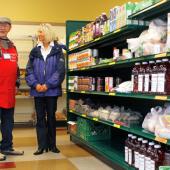
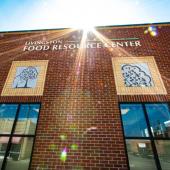
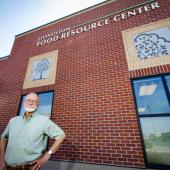
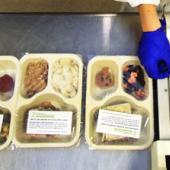
“People come to the pantry and really appreciate what we do,” said McCormick. “You want the best food in Park County, you come to the food center. Period.”
To learn more about the center, collaborate or volunteer visit livingstonfrc.org.









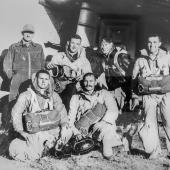

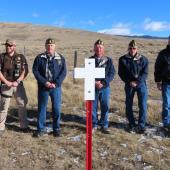
Leave a Comment Here